by Amineddoleh & Associates LLC | Jul 9, 2024 |
Spain’s most exciting art exhibition of the summer is not in Barcelona. It’s not even in Madrid. Instead, the summer’s hottest art excursion is in a deconsecrated and incomplete cathedral in Alba de Tormes, a small town that is a two-hour drive from Madrid.

Alba de Tormes. Image courtesy of Frayle via Wikimedia Commons.
El Esplendor de La Pintura en Valenica
The exhibition, titled El Esplendor de La Pintura en Valenica (The Splendor of Painting in Valencia), highlights artists from Valencia in the late 15th and early 16th centuries. It demonstrates how the arrival of Italian and Flemish artistic influences at this time provided the spark needed to set the Spanish Renaissance ablaze. (Note for readers under the age of 16: Valencia is not just an Instagram filter – it’s also a beautiful municipality in Spain!)
This breathtaking exhibition features a monumental 120 pieces of Renaissance works, 90% of which have never been on display. Nothing like this has ever been accomplished in Alba before – and the exhibition’s success has made the international art world pay attention.
Two primary aspects of this exhibition make it stand out. The first is that the art on display is remarkable. The focal point of the exhibition is a painting of Christ tied to the pillar by Juan de Juanes. It is largely regarded as his best work, as well as a true pillar of the Spanish Renaissance canon. The painting is accompanied by an augmented reality rendition of the prized work. In an immersive video located in a nearby booth, viewers are treated to a life-like vision of Christ suffering. Christ stares soulfully into the eyes of the viewer, while tilting a head made heavy by a crown of thorns, and lifting bound wrists. This effect is powerful – and enough to send even the most pious attendees scurrying to Mass.
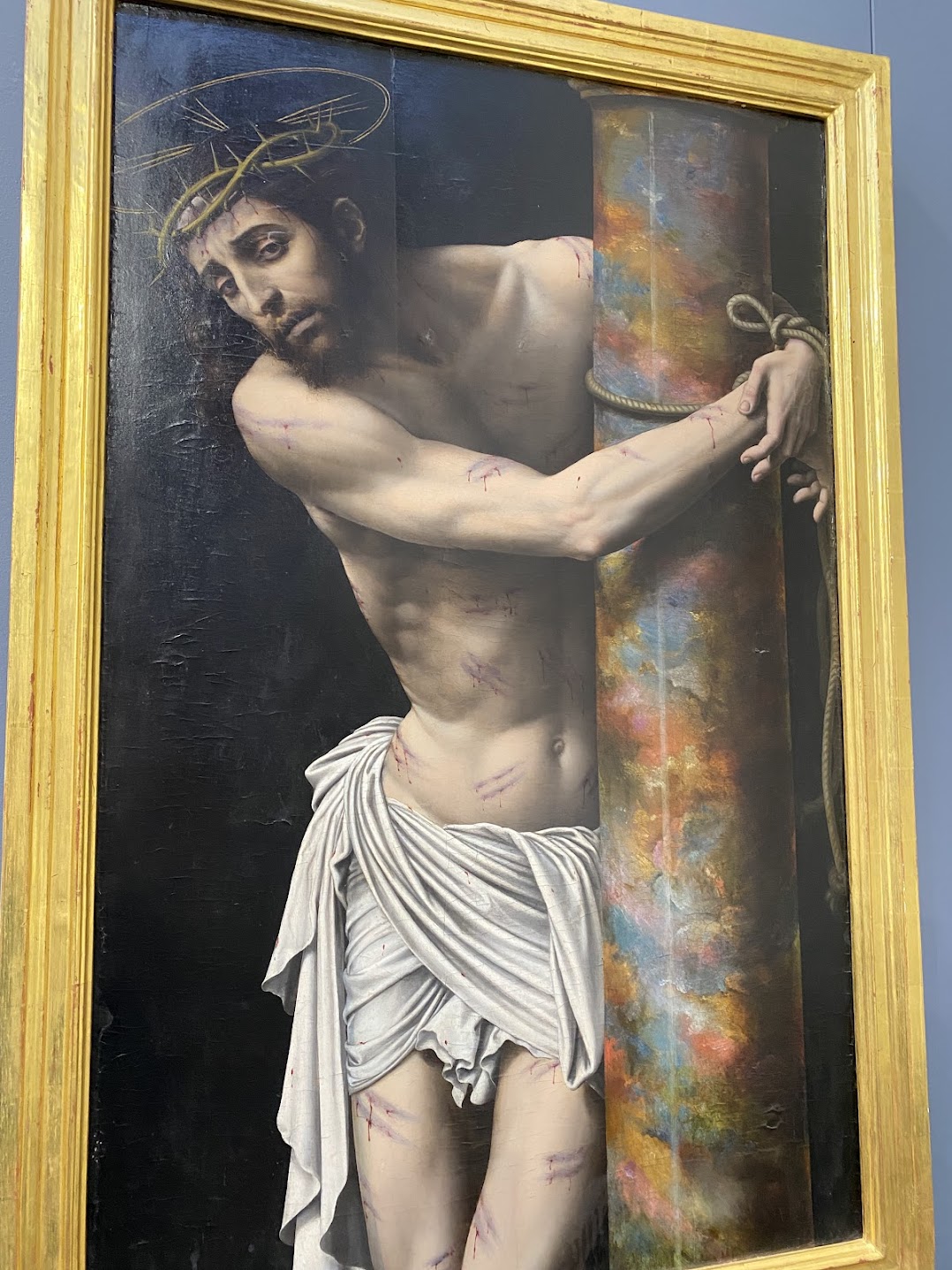
“Christ tied to the Column” by Juan de Juanes. Copyright: Leila A. Amineddoleh
In addition to Juan de Juanes’ pivotal work and its augmented reality counterpart, other priceless works fill the cavernous space. One wonders how such a thoughtfully curated collection came together. Many works are on-loan from private collections (the centuries-old altarpieces, for example, are a particular coup and a true treat for the senses). In fact, the collection is so triumphant in its significance and rarity that it alone makes a trip to Alba a definite “must” for anyone in Spain this summer. Which leads to the second reason this exhibition is garnering so much buzz in the art world.
Alba is a beautiful city, known for being a haven for painters and artists in the 16th century (who all flocked to bask in the aura of the ineffable Duke of Alba). Not only that, Alba is known for housing renowned Catholic saints St. Teresa of Avila and Saint John of the Cross. Despite all of this history, the city is still rarely considered a tourist site.
Tourism and Depopulation
The decision to hold the exhibition in Alba, then, was a response to what’s known as la España vaciada or “hollowed-out Spain.” This term is used to describe the depopulation happening across the country of certain areas. As citizens leave rural areas in favor of big city life, smaller towns face a host of problems: unemployment issues, reduced or eliminated services, closed restaurants and shops, and desolate downtown urban areas. But one unfortunate side effect less-frequently talked about is the threat depopulation poses to art and cultural heritage.
Our founder wrote a well-informed (and prescient) note on this topic (available here). But for those who are new to the subject, the depopulation of culturally rich areas puts the art and cultural heritage left behind at risk of theft, environmental destruction, and intentional or accidental demolition – just to name a few. Abandoned cultural sites and works of art are easily targeted by looters and bored civilians alike. The result is the heartbreaking loss of irreplaceable worldly treasures.
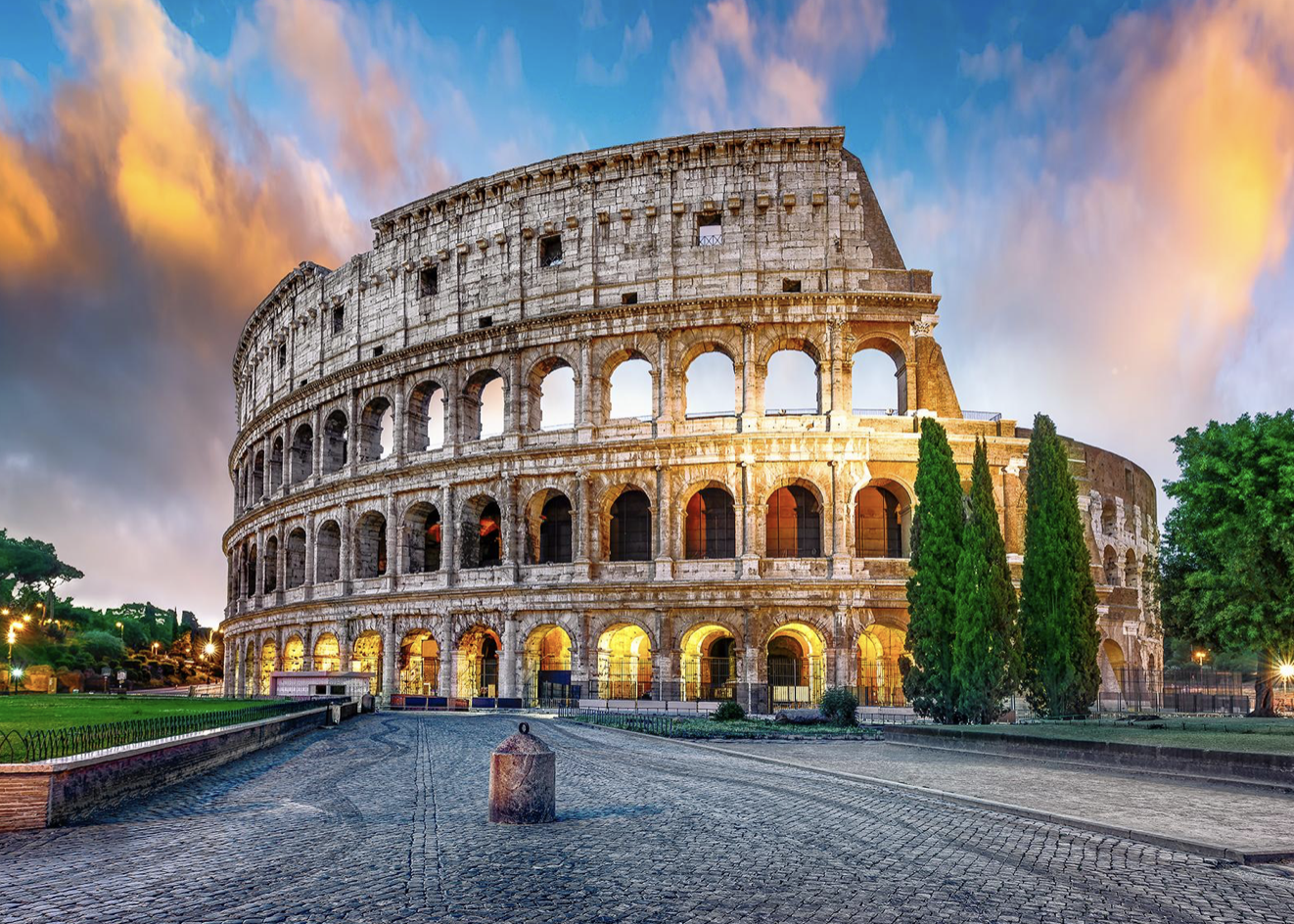
The Colosseum in Rome is a heavily-touristed site. Image via Fodor’s, available at https://www.fodors.com/world/europe/italy/rome/experiences/news/photos/the-10-best-ancient-sites-in-rome.
One solution to this damage that comes from depopulation is to re-direct tourism to these areas from highly popular sites. When tourism booms in the same areas over and over, a whole host of other issues ensues (Our firm has written at length on that topic here – click to brush up on the dangers of overtourism, including destruction of cultural sites due to wear-and-tear, as well as vandalism).
When tourism is instead spread out to more places, the risks to cultural heritage from overtourism are mitigated. Moreover, the economic benefits of tourism – and the boom it can provide to local economies – is more evenly spread out around the country.
This move to a more sustainable form of tourism does not happen naturally. Rather, it requires concentrated efforts from dedicated groups and individuals on the front lines. Immersive knowledge of a place and its most significant features are essential to breathing life into new spaces, in order to create new patterns of tourism.
Reliance on Local Experts
Nicolas Cortés, a 30-year veteran of the art world, is one of these individuals, and an organizer of the Valencia exhibition. His vision for this particular effort was, in his words, to expose people to high-quality art, as well as to the beautiful city of Alba itself. For Cortés, “it’s also about the environment. We want people to come to beautiful places [like Alba de Tormes] so they can get to know them.”

El Monasterio de la Anunciación de Nuestra Señora de Carmelitas Descalzas de Alba de Tormes. Image courtesy of Fundacion Declausura.
Cortés’s work is particularly important in Spain, where lack of Spanish involvement in international treaties has led to a disinterest in the international art world over the protection and preservation of Spanish artistic treasures. Additionally, many of the art and cultural heritage at-risk due to depopulation is held by the Church, and thus out-of-reach for State actors.
This is why the Valencia exhibition is such an artistic powerhouse – bringing culture to an area experiencing the negative impacts of depopulation, in a way that draws upon locals to help with daily operations and revitalizes the town’s economy. It features artists such as Gonçal Peris, Joan Reixach, Maestro de Artés, Yáñez de la Almedina, Martín Gómez, Paolo de San Leocadio and (of course) Juan de Juanes. In the words of the exhibition’s curator, José Gómez Frechina, the arrival of foreign works in Valencia “struck the city like a bolt of lightning, illuminating the way for all the painters there”. The resulting exhibition is a lighting strike itself. In short, it is worth a two-hours’ drive from Madrid.
Efforts Made by Turkey
Spain is not the only international location using tactics like this to divert tourists from over-touristed areas, In Turkey, for example, Istanbul’s city-wide restoration teams have painstakingly restored new attractions to bring tourism to little-known historical and cultural sites in the city.

Gülhane Park Cistern. Image courtesy of thebyzantinelegacy.com.
Istanbul is ripe to benefit from shifting tourism patterns (fun fact: Istanbul is currently the #1 most-visited city in the world), because Istanbul is a city of multiple layers. This means that there is always something new for the city to feature – and for tourists to discover. Most tourists rush to the Basilica Cistern upon arrival, as the city’s most famous cistern. However, just a 12-minute walk away is the Gülhane Park Cistern, a 1,500-year-old reservoir that has been restored by the city and recently reopened to the public in 2023. The Gülhane Park Cistern is ensconced inside a gorgeous green area that was once part of the private Topkapi Palace (also home to the Column of the Goths, a Roman monument, and the Alay Köşkü, a former favorite hang-out of 16th century Ottoman sultans).
By directing tourists to these, lesser-known but highly-valuable cultural sites, the municipality is able to relieve the burden of overtourism to a site like the Basilica Cistern – while still providing a memorable and invigorating experience to the visitors.
Sustainable Tourism
Dedicated efforts like these by cities and municipalities (when possible) and by individuals and nonprofits (when applicable) serve to mitigate the impacts of overtourism to popular sites. They also aim to correct issues caused by depopulation of rural areas. The combined impact protects cultural heritage on two fronts – providing a wonderful model for sustainable tourism moving forward.
Plus, who needs another photo of the Trevi Fountain? This summer, all the cool kids are at the Valencia exhibit in Alba – just check our firm’s socials for proof.
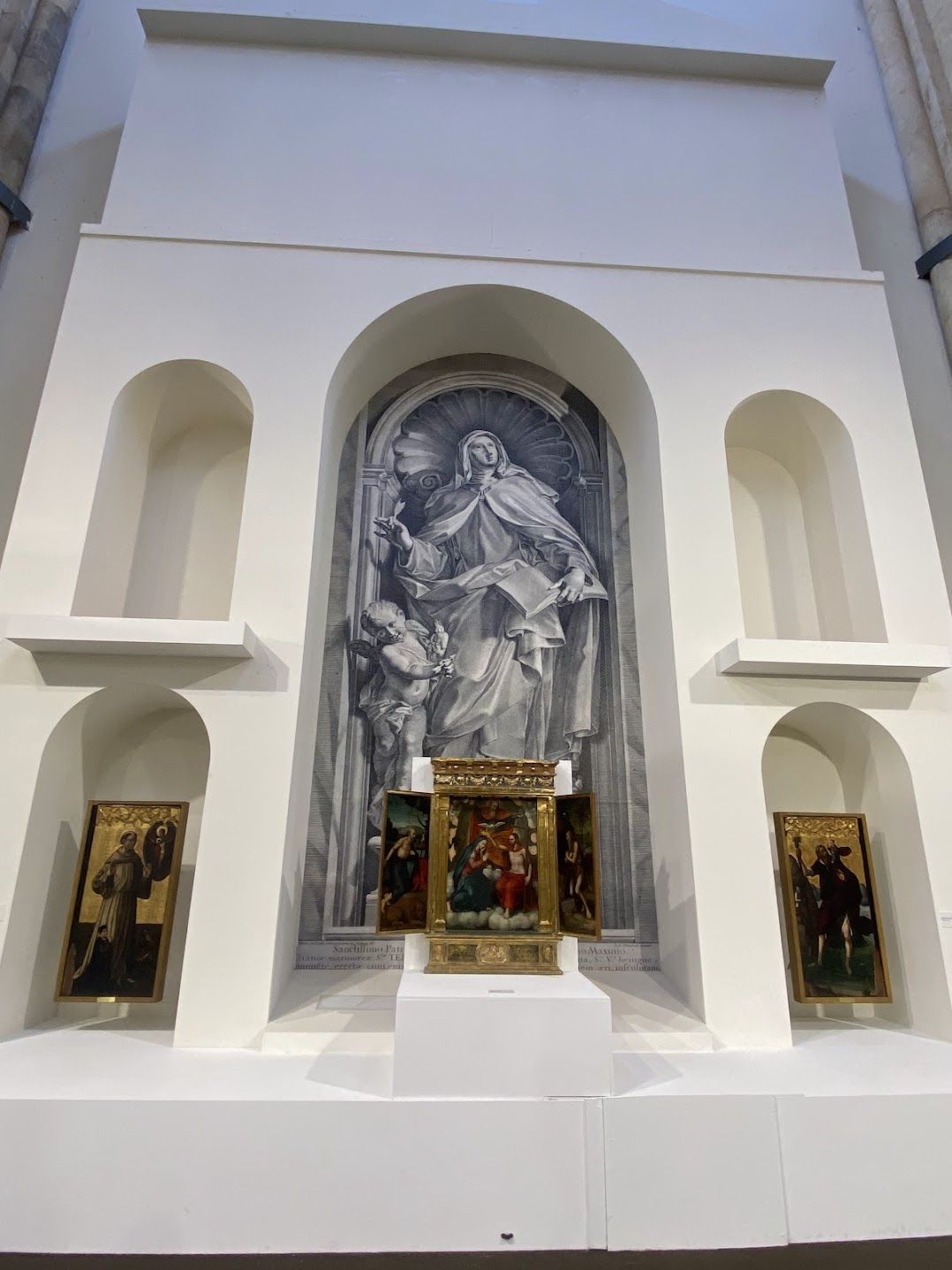
Altarpiece at El Esplendor de La Pintura en Valancia. Copyright: Leila A. Amineddoleh
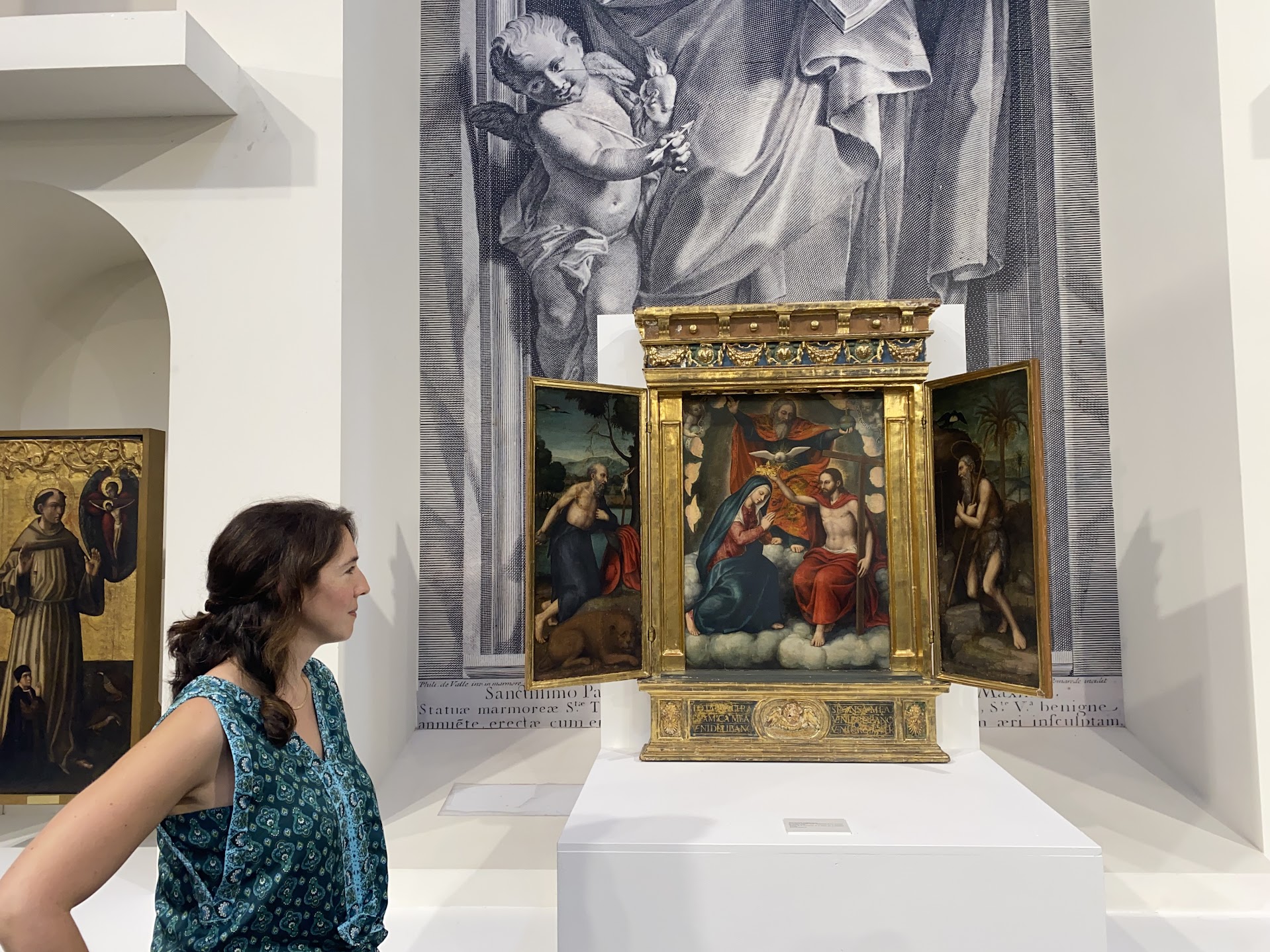
Our founder at the opening reception of El Esplendor de La Pintura en Valencia.
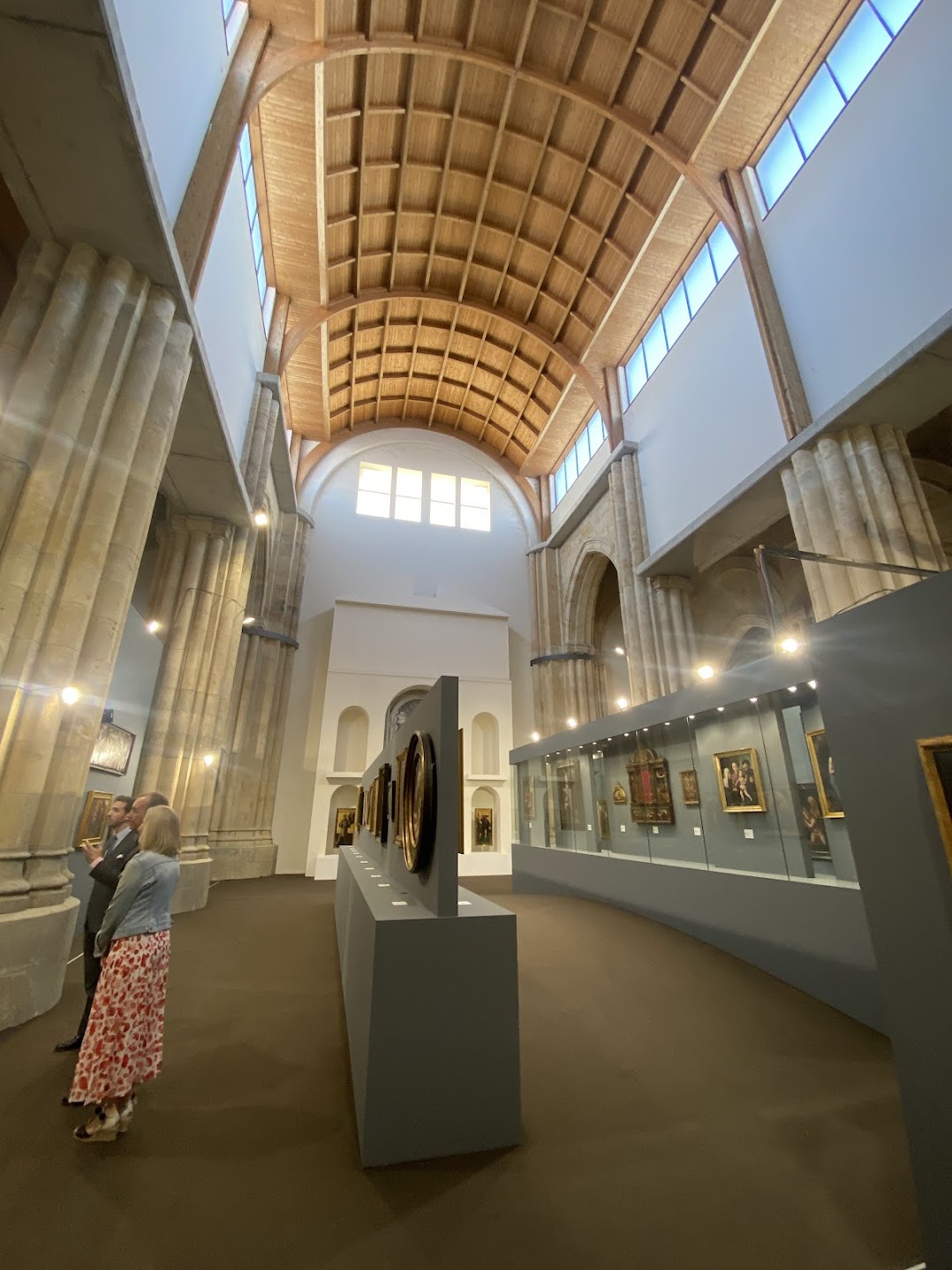
The Mayor of Alba de Tormes enjoying a tour of the exhibition. Copyright: Leila A. Amineddoleh
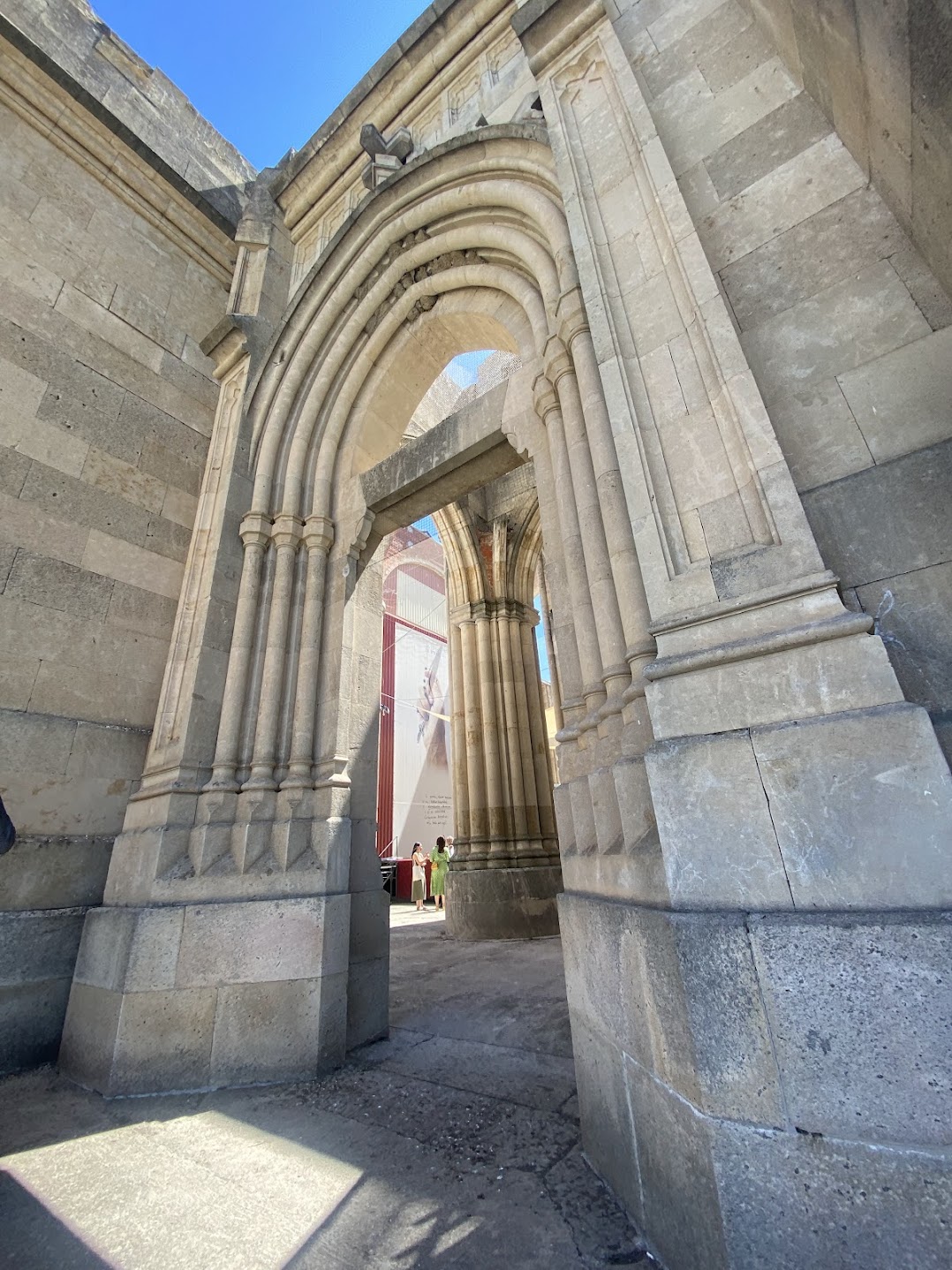
Entry to the exhibition. Copyright: Leila A. Amineddoleh
by Amineddoleh & Associates LLC | Jun 27, 2024 |
We are proud to share Maria T. Cannon’s most recent publications, published on the New York State Bar Entertainment, Arts and Sports Law (EASL) Section blog.
EASL Section Blogs

Grateful Dead concert ticket for June 9, 1991. The Grateful Dead have famously protected their band’s IP through various trademark registrations. Image via kansasphoto.
When Should My Client Trademark Her Artist Name?
The first article is titled, “When Should My Client Trademark Her Artist Name? Answer: After Jack Daniels, ‘Yesterday’. The piece examines the heightened importance for music artists to register the trademarks for their band names, in the aftermath of the stunning Supreme Court decision Jack Daniels’s v. VIP Prods., LLC. Trademark protection for brands is stronger than ever. Plus, artists never know when they will go viral.
Filing for trademark registration is the single best thing working music artists can do to protect their reputational integrity.
You can read the article in full here.
Nonprofits Back Tony Nominees
Maria’s second article, titled “Nonprofits Back Tony Nominees: What This Means for EASL Lawyers and Why,” comes out just in time for the Tony Awards!

New York City, sparkling at night. Image via Sean Da Ros.
This piece discusses the word “provenance” (both its legal and plain-old Webster definitions) as applied to Broadway productions. She also draws attention to the dire financial situation facing Broadway, and what EASL lawyers can do to help.
Check out her article here.
Preserving Intangible Cultural Heritage
Another article Maria published considered the importance of protecting intangible cultural heritage. In the article, Maria highlighted the fantastic Armenian lifestyle magazine and brand, Qami Jan (founded by our own Yelena Ambartsumian!). Qami Jan has impacted how Maria views the importance of intangible cultural heritage, and its magazine is a must-read for anyone seeking to learn more on the topic.
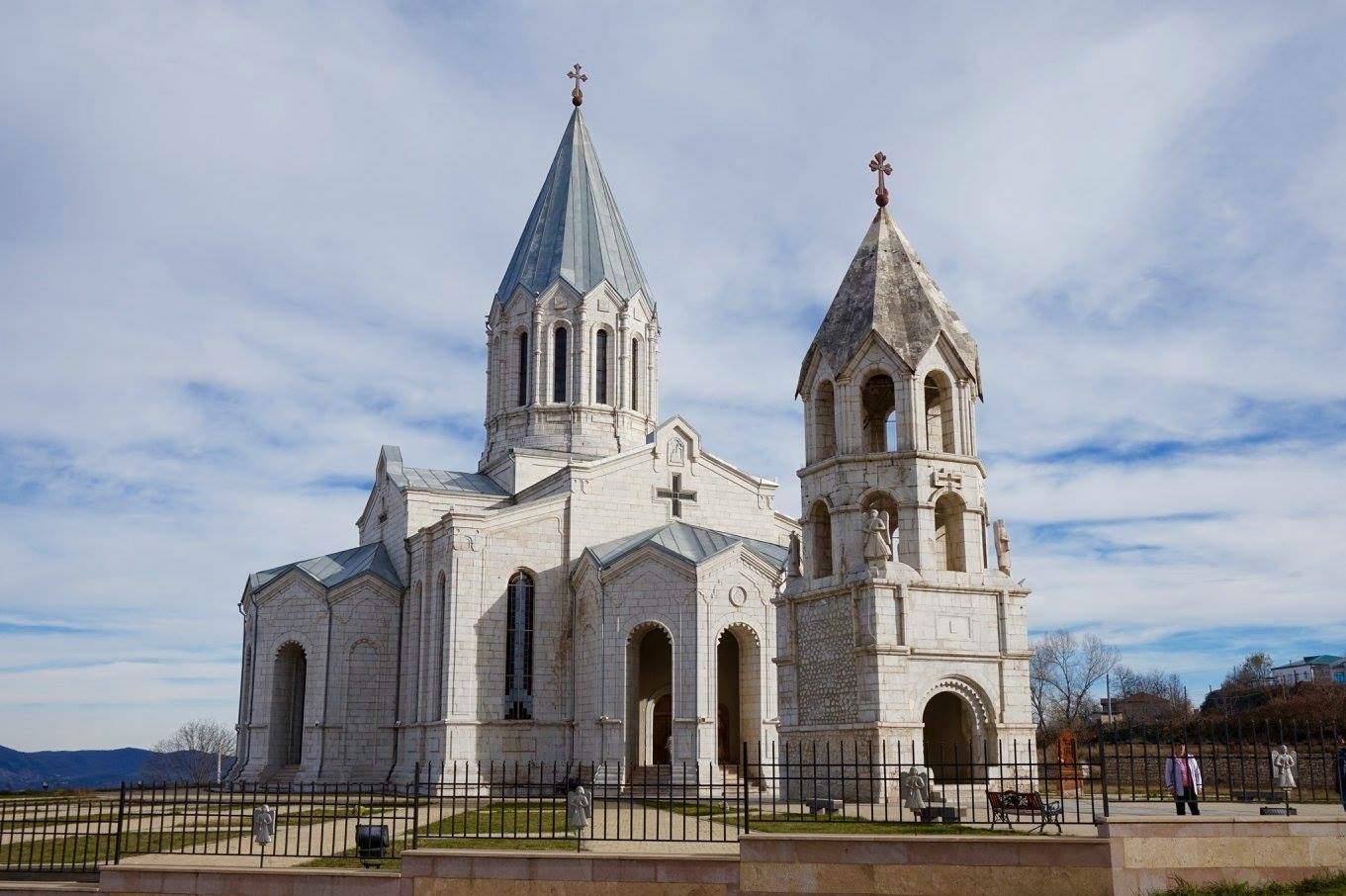
Ghazanchetsots Cathedral in Shushi (2015). Image courtesy of Yelena Ambartsumian, used with permission.
Read the EASL article here. Connect with Qami Jan here.
When Great Trees Fall: Sports Legends and Sports Law
Maria also published an article honoring sports legends Jerry West and Willie Mays on the EASL blog. The article examines how the players’ influenced sports law, and American culture at large, through their contributions to the sport.

Jerry West playing for the Lakers in 1972. Image via The Sporting News Archive by Malcom W. Emmons.
Read the article here.
City Sidewalks: Dressing Our Cities in Artistic Style
Finally, Maria wrote a piece on the importance of street art in urban planning. She gave spotlighted Building 180, a woman-founded organization that implements public and private art installations (which we have profiled on the blog, available here).
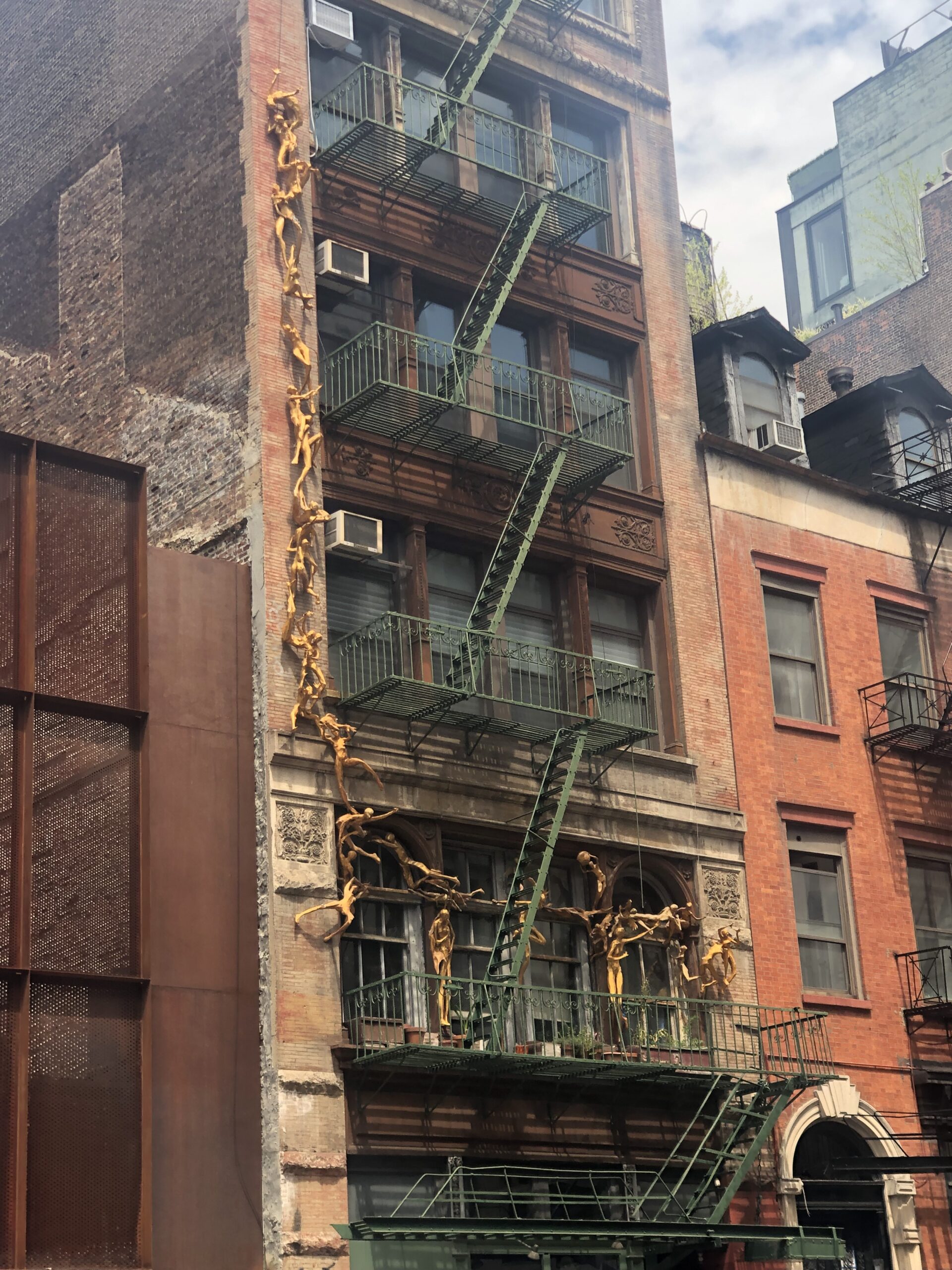
Street art on 24 Bond. Image courtesy of Maria T. Cannon, used with permission.
by Amineddoleh & Associates LLC | May 24, 2024 |
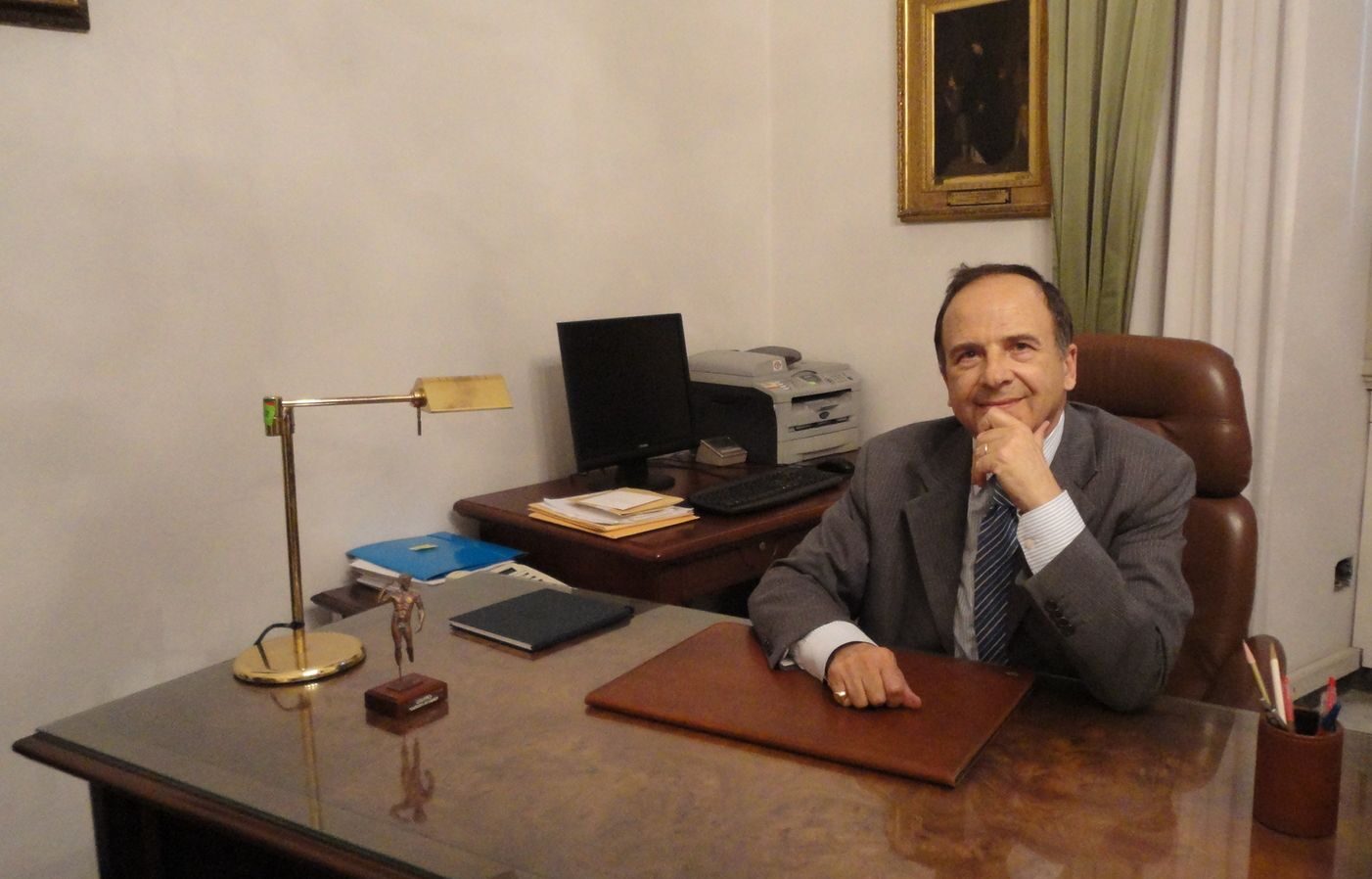
Signore Fiorilli in his office with a miniature replica of the statue (Copyright: Leila A. Amineddoleh)
For years, we’ve been followed the dispute over the Getty Bronze. In 2010, our founder had the honor of meeting and conferring with state attorney Maurizio Fiorilli. Referred to as the “scourge of the tomb raiders,” or simply as “il Bulldog,” Fiorilli is recognized internationally for pursuing the return of looted artifacts from illicit trafficking networks. He famously played a role in Italy’s successful negotiation for the return of the celebrated Euphronios Krater from the Metropolitan Museum of Art to Italy. When Leila met with Signore Fiorilli in 2010, he had a small replica of the Getty Bronze placed his desk in his office in the state attorney’s office. It sat there to remind him of one of his goals—the return of the artifact to Italy.
The Getty Bronze (alternatively known as “Victorious Youth” or the “Fano Athlete”), likely created during the second or third century B.C. in Greece, is a life-size statue of an athlete crowned with an olive wreath. It was likely lost at sea after it was looted by the Romans. In 1964, it was discovered in the Adriatic Sea by Italian fishermen who then sold it to dealers for $5,600. It changed hands numerous times, with the Getty Museum purchasing it in 1977. Between the discovery date and the museum’s acquisition, it was purportedly kept in a bathtub, hidden in a cabbage patch, and concealed by a priest. During that time, it also crossed multiple international borders. Although the Getty Museum’s founder was interested in acquiring the antiquity, he had reservations about the bronze due to title issues and his concerns that the piece was not legitimately on the market. After John Paul Getty’s death, his eponymous museum purchased the antiquity.
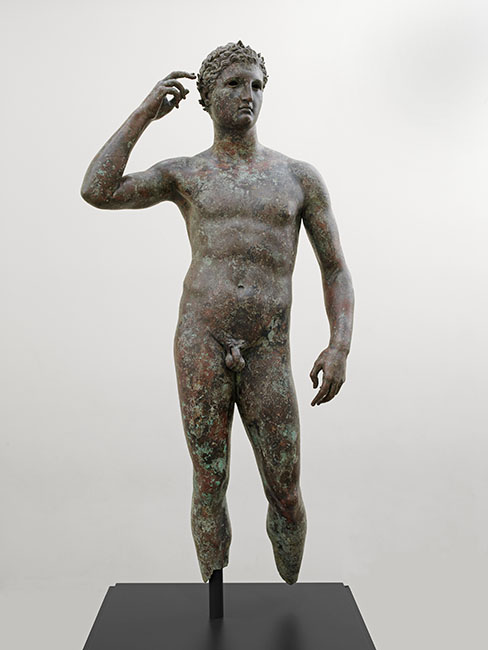 During Leila’s talks with Signore Fiorilli, they reviewed files on the Getty Bronze and discussed some of the challenges in the litigation. That year (2010), an Italian judge found that the bronze was smuggled out of Italy, and he ordered the Getty to return it. (A discussion of the ruling can be found in a piece Leila authored in 2011—pages 30-32 of this newsletter). The return never happened.
During Leila’s talks with Signore Fiorilli, they reviewed files on the Getty Bronze and discussed some of the challenges in the litigation. That year (2010), an Italian judge found that the bronze was smuggled out of Italy, and he ordered the Getty to return it. (A discussion of the ruling can be found in a piece Leila authored in 2011—pages 30-32 of this newsletter). The return never happened.
Then in 2019, the Corte Suprema di Cassazione (the highest appeal court in Italy) found that Italy owned the statue and ordered the Getty Museum to return it. The basis for the decision was that the bronze was found in Italy’s territorial waters and thus belongs to the country under its patrimony law (Law No. 1089 of 1 June 1939). Alternatively, even if the statue was found in international waters, ownership is based on the theory that the ship transporting the bronze to shore was sailing under an Italian flag. The court found that the Getty never conducted the requisite due diligence prior to acquiring the valuable antiquity.
As anticipated, the Getty never complied with the order from the Italian court. The museum treated it as a foreign decision lacking any enforcement power in the US. But the latest development took place earlier this month when the European Court of Human Rights (ECHR) addressed the dispute. The Getty Trust had filed the matter with the ECHR to challenge the final Italian decision, arguing that the Cassation Court’s confiscation order violated Article 1 of the First Protocol to the European Convention on Human Rights, by interrupting the “peaceful enjoyment of possessions.”

The coast near Fano, Italy (Copyright: Leila A. Amineddoleh)
However, the court sided with Italy, unanimously affirming Italy’s right to seize the statue from the Getty. The ECHR found that the Mediterranean nation was justified in its attempts to reclaim a cultural artifact and that its decades-long battle was not disproportionate. While the court found that the Getty’s right of “peaceful enjoyment” was triggered, Italy was justified in pursuing the bronze as part of its work protecting cultural heritage. The court held that international law strongly favors Italy’s efforts to recover stolen cultural objects, and the Getty did not conduct proper due diligence prior to acquiring the bronze in 1977.
Maurizio Fiorilli said that the ruling is “a victory for culture.” But practically speaking, will the court’s decision have any effect on the bronze and the Getty? Will US law enforcement recognize the order from the ECHR and seize the statue? It’s unclear.
ECHR rulings are binding on states that are party to the court. However, the US is not a party to it. Cultural heritage law expert Patty Gerstenblith has stated that if US courts enforce the judgment, it will “open a huge can of worms for American museums.” While it’s unclear whether the ECHR judgment will be enforced in the US, Italy has a long history of cooperating and collaborating with US parties and institutions, including museums and law enforcement.
Disclaimer: While this law firm has represented Italy in past proceedings and Leila A. Amineddoleh has conferred with Maurizio Fiorilli concerning the Getty Bronze, none of the information in this post includes confidential information or legally sensitive material. All material in this blog post is publicly available.
by Amineddoleh & Associates LLC | May 15, 2024 |
Last week, a painting stolen over forty years ago was finally returned to its original owner, Chatsworth House. The painting, A Double Portrait of Sir Peter Paul Rubens and Sir Anthony Van Dyck (1640s) by Eramus Quelliness II, was stolen on May 26, 1979, and recently discovered at a regional auction house in France. Chatsworth House lent the work to the Towner Art Gallery for an exhibition featuring works by the Flemish Baroque artist Anthony Van Dyck.

Eramus Quelliness II’s A Double Portrait of Sir Peter Paul Rubens and Sir Anthony Van Dyck (1640s). Image via Chatsworth House Trust.
“Smash and grab”
The exhibition did not go as planned. To the public’s astonishment, the gallery fell victim to a “smash and grab” raid after the exhibition. Thieves made off with A Double Portrait of Sir Peter Paul Rubens and Sir Anthony Van Dyck, but left more valuable works behind – causing authorities to believe that the robbery was not well-planned out. While A Double Portrait looked more expensive than the drawings left behind, the original Van Dyck drawings the thieves left were much more valuable (and have sold for upwards of $2 million in recent years).
The thieves may not have been very knowledgeable about art. Even so, they disappeared without a trace. The painting had been feared lost since that night in May 1979.

Interior of Chatsworth House. Image via Chatsworth House Trust.
Miraculous Recovery
Until now!
In 2021, an art historian discovered that the work was listed for sale in the bucolic town of Toulon, France. They reported the finding to Chatsworth House, who happily stepped forward to claim the work.
It’s unclear how the piece made its way from the thieves to modern-day France. The Art Newspaper reports that the painting was sent to Toulon to be sold after the seller discovered it while cleaning out his late parent’s house.
The painting required extensive restoration. Today, the work shines with its former glory.

Collectible from Chatsworth House. Image via Chatsworth House Trust.
The Art Loss Register
This was a happy ending to a devastating art robbery. Art crime continues to plague valuable collections in public and private collections all over the world. To combat the problem, the Art Loss Register (ALR) currently holds and maintains the largest private database of lost, stolen, and looted art, antiquities and collectibles.
Works are added to the registry on behalf of victims of looting and theft, insurers, police forces and other interested parties. ALR also employs a unique due diligence service for their clients who are active in the art market to ensure that they are handling objects that do not have questionable provenance.
The ALR single-handedly provides the art industry’s best risk management tool for those seeking to buy and sell works of art and cultural heritage. Moreover, using ALR’s tools and databases speeds up recovery of missing works, because searching the database enables users to identify works that have been stolen – and to return them to their claimant for recovery.
To read more about how ALR helps its clients search, register and recover lost art, click here.
by Amineddoleh & Associates LLC | Apr 23, 2024 |
Brava to our firm’s founder, Leila A. Amineddoleh, for being named Vice Chair of the Board of Trustees of the Grammy®-Winning Experiential Orchestra (EXO).

The Experiential Orchestra during a performance. Image via the Experiential Orchestra.
About EXO
The Grammy®-Winning Experiential Orchestra features a star-studded lineup of New York City freelance musicians in concerts designed to engage audiences in immersive and imaginative ways. Featured in Symphony Magazine, hailed as the #1 Classical pick in TimeOut New York, and with articles in the New York Times and the Washington Post, EXO represents a dynamic example of how orchestral music can be engaging, relevant, and immersive.
Performances have included circus choreography to Stravinsky’s Petrushka and Berlioz’s Symphonie fantastique, invitations for the audience to dance to Stravinsky’s Rite of Spring and Tchaikovsky’s Nutcracker, and inviting the audience into the center of the orchestra at Lincoln Center. Other concerts have featured 36 oboes and bassoons surrounding the audience performing Lully and Rameau, commissioned 15 response-pieces to specific contemporary art at the Katzen Art Museum of American University, and “Loft Parties,” where 150 orchestra and audience members merge in a midtown New York apartment. Each concert is specifically created for the venue and audience, and often involves a combination of a party and a concert, all hosted by music director James Blachly.
Collaborations have included sold-out concerts of the music of Arvo Pärt at the Temple of Dendur at the Metropolitan Museum of Art with Met Live Arts, and with the Cathedral of St. John the Divine and LPR Presents; subscription concerts for the Phillips Collection, and partnerships with Young Patrons of Lincoln Center, Americas Society, Halcyon Stage, MusiCambia, Muse Circus, Groupmuse, and Women’s Philharmonic Advocacy. EXO has performed throughout New York City, including at Alice Tully Hall, Roulette Intermedium, National Sawdust, and Fotografiska. EXO has commissioned works from prominent composers including Jessie Montgomery, Viet Cuong, Kristen Volness, Kate Copeland Ettinger, Wang Lu, Elliot Cole, and Christopher Wendell Jones.
Artistic collaboration is an essential part of the EXO model. Pauline Kim Harris is the Director of Artistic Planning, with an Artistic Team consisting of Alex Fortes, Lady Jess, Henry Wang, Sami Merdinian, and Michelle Ross. Patrick Castillo, Doug and Brad Balliett act as Artistic Advisors.
In 2021, EXO won a Grammy® Award with their recording of Dame Ethel Smyth’s The Prison, a recording that was featured around the world and short-listed for a Gramophone Award. Their second recording, American Counterpoints, featuring violinist Curtis Stewart in the music of Julia Perry and Coleridge-Taylor Perkinson, has been featured on NPR’s All Things Considered, the New York Times, Strings Magazine, BBC Magazine, and Performance Today.
The orchestra has also developed an experiential model for groups and leadership trainings called “Listening Concerts,” in which executives and others are placed in the heart of the orchestra. These concerts have been featured at Lincoln Center, New York Hall of Science, MIT/Sloan, and for Fortune 500 companies.

Conductor James Blachly and the Experiential Orchestra. Image via the Experiential Orchestra.
In an interview in Symphony Magazine, founder Blachly explained that his goal is not to replace the traditional orchestral experience, but to keep the act of listening “fresh for everybody. . . . [At EXO, we] invite people in so that when they next attend a traditional concert, they hear things differently.”
To learn more about EXO, click here.
by Amineddoleh & Associates LLC | Mar 23, 2024 |
In a highly-public withdrawal, Christie’s pulled four ancient Greek vases from auction. The four antiquities ranged in value from $7,000 to $30,000. It appears that the vases are the product of illicit dealings. They have been traced to the notorious antiquities trafficker Gianfranco Becchina.

One of the four disputed vases pulled from auction. Image via Christie’s.
Vases Traced to Notorious Dealer
Becchina, a well-known middleman in a looting network who was convicted for his actions in 2011, cosigned three of the four vases for a Geneva Christie’s auction in 1979. For the upcoming April 2024 auction, Christie’s listed the vases’ sale in 1979, but failed to disclose the fact that Becchina cosigned the objects. Dr. Christos Tsirogiannis, a lecturer at the Unviersity of Cambridge, called Christie’s nondisclosure “a trick used by the highest level. . . [t]hey deliberately exclude the connection of a trafficker in these three examples, although they’ve known about that connection for 45 years.”
Christie’s has released a statement counter to this effect, stating that the auction house “takes the subject of provenance research very seriously, especially when it related to cultural property.” However, taking the subject of provenance research seriously, and proactively allocating the resources and dedicated staff to carry out the work, are two different things.

A disputed vase pulled from auction. Image via Christie’s.
New Head of Provenance at the Met
In other antiquities news, the Metropolitan Museum of Art is taking a proactive stance. Last month, the museum hired Lucian Simmons (previously of Sotheby’s) as its first-ever Head of Provenance Research. This new position points to the museum’s recent efforts to increase the museum’s number of provenance-specific employees, in an era of greater scrutiny against both private and public collections. An increase in the number of restitutions has occurred during the past few decades, and this new hire makes the Met better situated to research provenance issues and handle requests for restitution. Mr. Simmons’ hiring brings the number of specialized province employees to eleven – an astonishing number for the institution.

Mr. Lucian Simmons. Image via Wilson Santiago/Metropolitan Museum of Art.
Mr. Simmons has extensive experience with provenance research and related issues, due to his long tenure at Sotheby’s. Since 1997, Simmons has developed and deployed transparent provenance policies for the auction house. In fact, transparency is at the heart of all of Simmons’ provenance work. He told to The New York Times that from the beginning of his time at Sotheby’s, he has “always tried to make sure [Sotheby’s was] very open” in the provenance research processes. Simmons intends to continue innovative model of transparency when he transitions to the Met this coming May.
New Awareness for Repatriation of Looted Antiquities
Repatriation actions for looted antiquities are increasingly being brought by countries around the world. Our firm has proudly represented and won legal claims related to looted antiquities on behalf of several nations, including the Republic of Italy and the Hellenic Republic of Greece. The cultural shift towards an increased awareness and respect for repatriation and restitution claims is something our firm both applauds and works to uphold.















 During Leila’s talks with Signore Fiorilli, they reviewed files on the Getty Bronze and discussed some of the challenges in the litigation. That year (2010), an Italian judge found that the bronze was smuggled out of Italy, and he ordered the Getty to return it. (A discussion of the ruling can be found in a piece Leila authored in 2011—pages 30-32 of
During Leila’s talks with Signore Fiorilli, they reviewed files on the Getty Bronze and discussed some of the challenges in the litigation. That year (2010), an Italian judge found that the bronze was smuggled out of Italy, and he ordered the Getty to return it. (A discussion of the ruling can be found in a piece Leila authored in 2011—pages 30-32 of 







